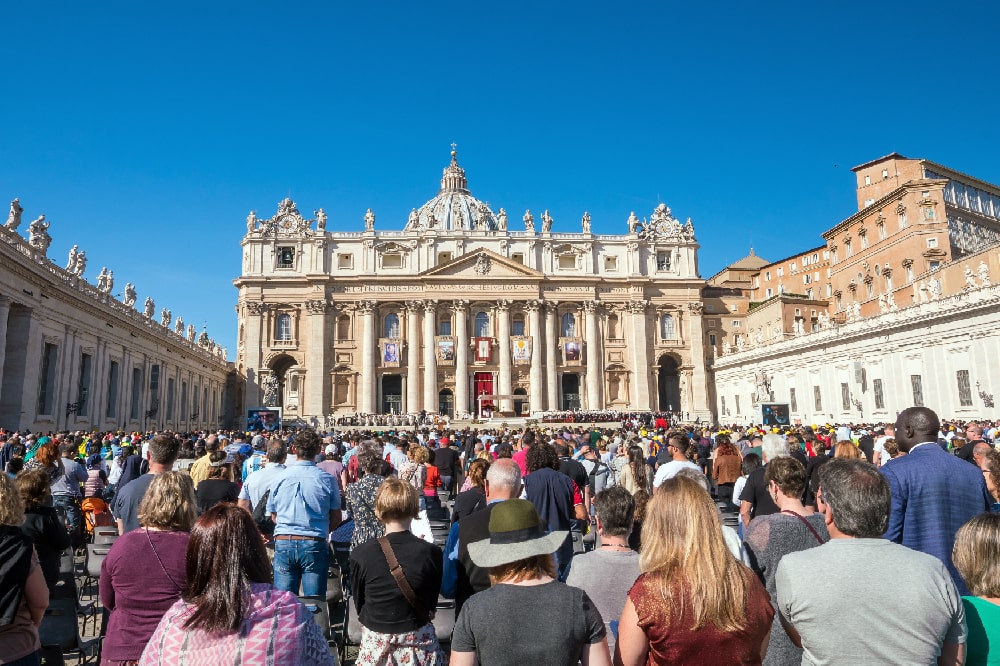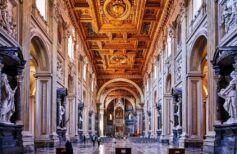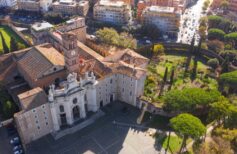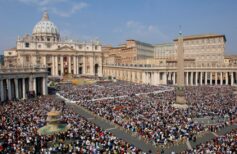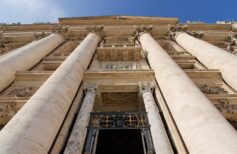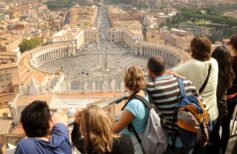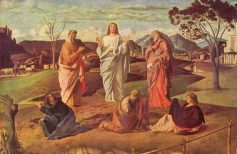What is the Jubilee? How often is it celebrated? In anticipation of the Holy Year 2025, let’s discover the origin of this centuries-old devotional practice.
Contents
In preparation for 2025, it’s important to understand what the Jubilee is. The Jubilee, or Holy Year, is a special religious event for the Catholic Church, characterized by solemn ceremonies, collective events, and devotional pilgrimages. It occurs at regular intervals, every 25 years, although there are extraordinary Jubilees, which are proclaimed by the Holy Father under certain circumstances.
During the Jubilee, the faithful are invited to make a pilgrimage to St. Peter’s Basilica in Vatican City, Rome, and to participate in rituals and acts of devotion, such as the Seven Church Walk. It’s an occasion for great spiritual growth and allows for the forgiveness of all sins because traditionally, those who pass through one of the Holy Doors during the Jubilee receive plenary indulgence, meaning the remission of all sins.

Pilgrimage to Rome: Among Christians’ Preferred Destinations
A pilgrimage to Rome has always been one of the most significant spiritual experiences for Christians from around the world.
But what does Jubilee mean? The origin of the Jubilee dates back to the ancient Jewish tradition of Yovel, which was celebrated every fifty years. The Jewish Jubilee primarily focused on land, property, and land rights. According to the Hebrew Bible, this special period involved a series of practices, including the return of land to its original owners, the remission of debts, the release of slaves and prisoners, the rest of the land, and a special manifestation of divine mercy. These practices aimed not only to ensure a just distribution of resources and promote social justice but also to emphasize the importance of divine mercy and compassion in the human experience. This period was initiated by the sound of a ram’s horn, “jobel” in Hebrew, from which the solemnity got its name, later transformed into Jubilee.
In the Gospel of Luke, Jesus, arriving at Nazareth, quotes a passage from the Book of Isaiah very explicitly, referring precisely to this special year dedicated to God: “The Spirit of the Lord is on me because he has anointed me to proclaim good news to the poor. He has sent me to proclaim freedom for the prisoners and recovery of sight for the blind, to set the oppressed free, to proclaim the year of the Lord’s favour.” (Isaiah 61:1-2). And so Jesus in the Gospel of Luke: “The Spirit of the Lord is on me because he has anointed me to proclaim good news to the poor. He has sent me to proclaim freedom for the prisoners and recovery of sight for the blind, to set the oppressed free, to proclaim the year of the Lord’s favour.“ (Luke 4:18-19)

The Indulgence of the Hundred Years was a significant event that anticipated and predicted the Jubilee in the history of the Catholic Church. This event occurred during the pontificate of Pope Boniface VIII, although it was not the Pope who instituted it. A tradition of unknown origin guaranteed complete remission of sins and the suspension of all temporal penalties to those who went on pilgrimage to St. Peter’s Basilica in Rome by 1300. It was Pope Boniface VIII who established the first Jubilee, perhaps inspired by the Indulgence of the Hundred Years or the aforementioned Jewish tradition of Yovel. Initially, it was planned for the Holy Year to take place every hundred years. Only later, with Pope Clement VI (1350), was the time interval lowered to 50 years, like the ancient Jewish Holy Year, then to 33 (the years of Christ), and finally to 25.
When does the Jubilee begin?
The Jubilee begins when the Holy Father opens the Holy Door of St. Peter’s Basilica. The opening of the Holy Door marking the beginning of the Jubilee is scheduled for December 24, 2024.

The Jubilee 2025 Events Calendar
The calendar of events for the Jubilee 2025 has been published, twelve months of events and occasions to deepen faith, live fraternal communion, and walk together as “pilgrims of hope.”
Ordinary or extraordinary Jubilee
In addition to the ordinary Jubilee, as already observed, there is the extraordinary Jubilee. The former is held according to the regular cycle established by the Catholic Church, every 25 years, and involves the opening of the Holy Doors of the Papal Basilicas in Rome, plenary indulgence for pilgrims, and numerous devotional practices.
The extraordinary Jubilee is instead proclaimed in exceptional circumstances to celebrate significant events in the Catholic Church or the world. For example, the Jubilee of Mercy in 2016, proclaimed by Pope Francis, was an extraordinary Jubilee aimed at celebrating and spreading the theme of divine mercy worldwide. During an extraordinary Jubilee, additional spiritual and sacramental opportunities are generally offered to the faithful, along with special indulgences.

Jubilee of Mercy Logo: what is it and who designed it
The Logo of the extraordinary Jubilee of Mercy was created and designed by an artist and religious man, who was able to instill in it the spirit of mercy that Pope Francis was hoping for this special occasion.
The significance of the opening of the Holy Door
The opening of the Holy Door not only marks the beginning of the Jubilee but also represents a powerful spiritual symbol for Christians. The Holy Door is the door of a church or Christian basilica that is proclaimed by the Pope as holy. During the Jubilee, this door, usually walled up, is opened, and crossing it allows the faithful to obtain plenary indulgence, the complete forgiveness of sins. In addition to its practical significance, the Holy Door has a profound symbolic meaning. In Sacred Scriptures, the door is often seen as the gateway through which the glory of God enters the house or, metaphorically, the human soul. Already in Ezekiel, we find references to this concept, which reflects the concept of welcoming divine grace into the heart of the believer. The Holy Door, therefore, is not only a symbol of physical access to a sacred place but also represents an invitation to let the presence and mercy of God enter our lives and transform our hearts.

Holy Door: what it is and what its opening represents
The opening of the Holy Door marks the beginning of the Jubilee, but it also represents a spiritually evocative symbol for Christians. Here’s what it entails.
Jubilee 2025 in Rome
For the Jubilee 2025, the arrival of over 32 million pilgrims in Rome is expected. This event will offer pilgrims a complete experience that combines faith, culture, spirituality, grace, and divine forgiveness. The Jubilee of 2025 offers a rich calendar of initiatives and solemn events, involving believers from all over the world. The chosen theme, Pilgrims of Hope, is more relevant than ever in this era of uncertainty and global upheaval. It aims to convey a message of hope and trust in the future, inviting believers to embark on a spiritual journey toward a greater awareness of divine mercy and a deeper commitment to spreading love and compassion in the world.

The Meaning of the Jubilee 2025 Logo: Pilgrims of Hope
The logo of the Jubilee 2025 has been unveiled, chosen from nearly three hundred proposals. A symbol of hope and fraternity that will guide us in the faith pilgrimage of the Holy Year.

